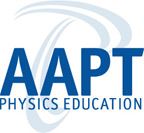- Home
- What We Do
- Laboratory Immersions
- Immersions 2022
- Imm2022IWU_SpatialLightModulators
Illinois Wesleyan Univ. (IL)
Programmable Optics with Spatial Light Modulators
Dates: July 18, 2022 to July 20, 2022
Number of setups
available: 4
Maximum
number of participants: 8
------------------------------------------------------------------------------------------------------------------------------------------
This Immersion focuses on reflective, liquid crystal-based Spatial Light Modulators (SLMs), which allow simple and direct programmatic control of phase, amplitude, or polarization across the field of a beam of light: thus, they serve as tools for direct exploration of mathematical models contained in Optics texts. As added bonus, their use avoids the excessive burdens associated with manual alignment and re-alignment (and re-alignment and...) that would be required for systematic studies based on traditional (fixed) optical components. Still, our primary motivation is that this approach to teaching Optics leverages hands-on laboratory engagement in ways that connect well with classroom discussion of mathematical modeling. Again, SLMs allow direct control of amplitude and phase modulation of beams, which is useful for teaching Fresnel Diffraction, Fraunhofer Diffraction, and Fourier Optics, as well as spatial filtering, computer-generated Holograms, Aberration Correction, Laser Modes, and much, much more (e.g., encoding information, the linear momentum, spin angular momentum, and orbital angular momentum of light beams). Immersion participants will work through many of the instructional labs from https://sun.iwu.edu/~gspaldin/OpticsLab.html. These begin with qualitative observation of polarization, followed by reminders of single-slit diffraction and multi-beam interference encountered in earlier coursework, here put to use to find the "filling fraction" of various Digital Optics devices, before those devices are put to use in a variety of explorations, where the array of pixels on the SLM can be programmed to achieve measured outcomes. These structured investigations lead to exploratory conversations, and onwards to independent projects, such as the design and construction of holographic optical trapping systems, or open-source "DIY" advanced imaging systems for use in local research projects. One pair of students implemented a neural-net-based method for adaptive optics.
The particular SLM used here normally costs $ 5K. Keep in mind that an SLM replaces many different kinds of specialty optics, can be used to automate aberration correction, and – most importantly – offers students a more direct connection to the math underlying Optical Physics. We feel it is money well spent.
If remote participation is necessary, participants would make use of TeamVIEWER software to control the equipment in my lab (which would be visible via web cam, and can be turned on/off remotely). Image analysis can be done with any software package or programming language, but my students have been using Mathematica.
Mentors: Gabe Spalding
Gabe’s intentions are mostly good, which may account for why students tolerate him to the degree that they do. He has been teaching at Illinois Wesleyan University since 1996. They haven’t kicked him out yet
Please note that the Jonathan F. Reichert Foundation has established a grant program
to help purchase apparatus used in Laboratory Immersions. Limitations
and exclusions apply, but generally speaking the Foundation may support
up to 40% of the cost of the required equipment.





